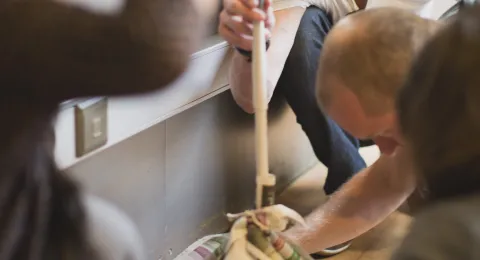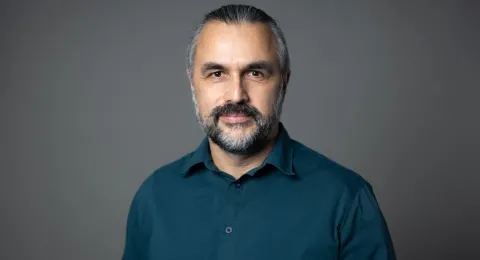“There are 4 candles on the table and 2 of them are lighted. If I take one lighted and one unlighted from the table how many will stay?”
“Two.”
“Right, but are you sure? Could the problem have an alternative solution?”
A student has a quick look at my face, possibly thinking she has made a big mistake choosing this course.
“Professor, four minus two is two”. Adding sarcastically “If I remember university math…!”
Creativity. The skill that everyone wants. The skill that is repeatedly found in top-5-wanted by the UN surveys for last decades. While most professionals agree the ability to generate new ideas is important, creativity seems to be observed as a kind of soft skill. Compared to hardcore things like mathematical modelling, simulation, optimization. And this is partially true.
Thinking out of the box
To be able to think out of the box, one needs…to have a box. A box with professional knowledge and experience, for example, related to the mining industry and “the way we have been doing things here”. Let me be more provocative: One can’t get out of the box without getting into another. No way. So, I would anxiously define creativity as an ability to travel systematically from one box to another. It is a transportation tool that makes it possible to observe the same problem from different perspectives, to find similarities in seemingly far distant fields, technologies, domains. Metaphoric thinking. Solving by analogy.
Modelling skills for everyone
There is no need to reinvent the wheel: any universal modelling tool could be such a vehicle. The same mathematical model could be for example used for the description of objects with totally different physical natures. My personal experience says that mathematicians and physicists are extremely interesting people to have a beer with, very creative minds. The message, however, is that in most problems an invention can be made with less demanding, more soft ways of modelling. A good set of these models is provided by TRIZ, the Theory for Inventive Problem Solving. I would recommend reading about the concept of Ideal Final Result and Contradiction elimination techniques. And if we teach creativity, TRIZ could definitely be a good foundation for the course.

Design the problem, save time – and money
The miracle (of boosted ideation) happens mostly when we design a model of our real problem. The abstract model releases our mind from the prison of “here and now”, the burden of “it has been solved typically this way”, the inertia of industry specific terms, thoughts, and approaches. Interestingly, the more the industry is rooted in hardware, in mechanics, the more conservative they are and the more impressive the results of the exercise. That is why mining is definitely a perfect domain where systematic creativity tools like TRIZ have a potential. TRIZ works well where there is a problem in mass production, in the field or in the workshop with noise and roar. I would call it a kind of “inventive audit” of a technology, where we are looking for low hanging fruits: finding and solving particular problems by inventing. Should an improvement be found, the scale of manufacturing in mining can easily promise millions of euros in savings. Nothing has been found – the cost of such an audit is incomparably lower to a full-scale research project. But rather than outsourcing the inventive audit, a much more sustainable philosophy would be to invest in the growth of our own people, deploy the methods of creative thinking and, most important, to create a culture of creativity, the atmosphere in which new ideas are lighting up the faces.
“There are 4 candles on the table and 2 of them are lighted. If I take one lighted and one unlighted from the table how many will stay?”
“Two… Or one, if we take time. The lighted candle will gradually burn and disappear. If I remember physics…”
The author is Leonid Chechurin, Professor in Systems Engineering at LUT’s School of Engineering Science
